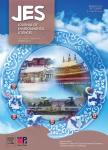Evaluation of biostimulation and Tween 80 addition for the bioremediation of long-term DDT-contaminated soil
Evaluation of biostimulation and Tween 80 addition for the bioremediation of long-term DDT-contaminated soil作者机构:GDCON Research Group Faculty of Engineering University Research Headquarters (SIU) University of Antioquia School of Geosciences and Environment Faculty of Mines National University of Colombia School of Microbiology University of Antioquia
出 版 物:《Journal of Environmental Sciences》 (环境科学学报(英文版))
年 卷 期:2015年第27卷第2期
页 面:101-109页
核心收录:
学科分类:0710[理学-生物学] 071011[理学-生物物理学] 0830[工学-环境科学与工程(可授工学、理学、农学学位)] 082803[工学-农业生物环境与能源工程] 07[理学] 08[工学] 0828[工学-农业工程]
主 题:DDT Soil Bioremediation Biostimulation Surfactant Toxicity
摘 要:The bioremediation of a long-term contaminated soil through biostimulation and surfactant addition was evaluated. The concentrations of 1,1,1-trichloro-2,2-bis(4-chlorophenyl)ethane(DDT) and its metabolites 1,1-dichloro-2,2-bis(4-chlorophenyl) ethane(DDD) and1,1-dichloro-2,2-bis(4-chlorophenyl) ethylene(DDE) were monitored during an 8-week remediation process. Physicochemical characterization of the treated soil was performed before and after the bioremediation process. The isolation and identification of predominant microorganisms during the remediation process were also carried out. The efficiency of detoxification was evaluated after each bioremediation protocol. Humidity and p H and the heterotrophic microorganism count were monitored weekly. The DDT concentration was reduced by 79% after 8 weeks via biostimulation with surfactant addition(B + S) and 94.3%via biostimulation alone(B). Likewise, the concentrations of the metabolites DDE and DDD were reduced to levels below the quantification limits. The microorganisms isolated during bioremediation were identified as Bacillus thuringiensis, Flavobacterium sp., Cuprivadius sp.,Variovorax soli, Phenylobacterium sp. and Lysobacter sp., among others. Analysis with scanning electron microscopy(SEM) allowed visualization of the colonization patterns of soil particles. The toxicity of the soil before and after bioremediation was evaluated using Vibrio fischeri as a bioluminescent sensor. A decrease in the toxic potential of the soil was verified by the increase of the concentration/effect relationship EC50 to 26.9% and 27.2% for B + S and B, respectively, compared to 0.4% obtained for the soil before treatment and 2.5%by natural attenuation after 8 weeks of treatment.



